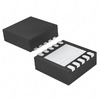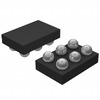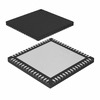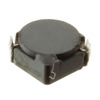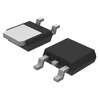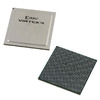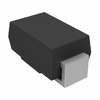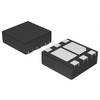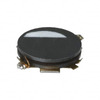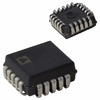Understanding the Features and Functions of the TJA1043 CAN Transceiver
The TJA1043 is a high-speed CAN transceiver made by NXP, created to improve communication in car networks. This article offers a full breakdown of the TJA1043's main features, how it works, and where it can be used. From meeting industry standards to its ability to diagnose issues, the TJA1043 plays an important part in making sure data moves smoothly and reliably between different parts of a vehicle. The following sections will look at its characteristics, pin layout, and functions, as well as its wide range of uses in fields like automotive, healthcare, and industrial systems.Catalog
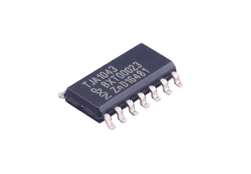
Introduction to TJA1043
The TJA1043 is a high-speed CAN transceiver designed by NXP with notable improvements in how it handles electromagnetic interference (EMC) and electrostatic discharge (ESD). Built as a standalone solution for HS-CAN (High-Speed CAN) communication, it efficiently manages the power needed for each node, a useful feature in today’s car designs. Developed in partnership with leading car manufacturers, the TJA1043 includes advanced diagnostics and can identify the source of wake-up signals, making it a valuable part of modern automotive systems. It follows ISO 11898-2 and ISO 11898-5 standards, and meets AEC-Q100 qualifications, fitting easily into automotive designs. The transceiver also follows RoHS guidelines and is made without harmful chemicals like halogenated flame retardants, showing NXP's care for the environment.
Alternative Options
• ISO1050
• MCP2551
• TLE6250
Features of the TJA1043
Compatibility with Different Voltage Systems
The TJA1043 is designed to work smoothly with both 12V and 24V electrical systems, making it flexible for various automotive uses. Its ability to handle both voltage types means it can fit into a range of vehicle designs and meet different power needs.
Operating Modes
The TJA1043 has five different operating modes, controlled by the STB_N and EN pins. These modes allow it to adjust its performance based on the situation, such as when running diagnostics or saving energy. Understanding these modes helps keep the system efficient and ensures that communication stays reliable.
Diagnostic Capabilities
The ERR_N pin provides important diagnostic feedback, sending alerts during mode changes to help spot potential issues in the system. These diagnostic features are helpful for keeping the system stable by making sure problems are found and fixed early, which improves overall dependability.
Fast Data Processing
With the ability to support CANFD (CAN Flexible Data-rate) during the fast phase, the TJA1043 allows data speeds of up to 5 Mbit/s. This makes it perfect for uses that need fast communication, like complex sensor systems and real-time control tasks. Its speed in handling data is important for systems that rely on quick and dependable information exchange.
Safety and Fault Detection
The TJA1043 includes features like detecting short circuits on the bus and monitoring the battery connection to make sure the system stays safe. These features help prevent electrical issues, protecting the system and boosting its overall dependability.
Wake-Up Control
Supporting both local and remote wake-up functions, the TJA1043 manages power efficiently while remaining responsive. These wake-up features help balance power saving with performance, which can extend the life of the vehicle's battery.
Protocol Compatibility
The TJA1043 works with CAN 2.0A and 2.0B protocols, allowing it to manage both standard and extended data frames. This wide protocol compatibility ensures it can connect smoothly with many different devices and systems, making it adaptable to various setups.
Pin Configuration Overview
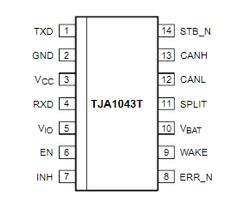
The TJA1043’s 14-pin setup supports a variety of functions that help network communication systems work properly. Below is a detailed explanation:
Signal Interface Pins
Pin 1 (TXD) works as a signal input, helping make sure that data is sent without interference. Pin 4 (RXD) functions as a signal output and needs to be carefully aligned with the system’s communication setup to receive data smoothly.
Power and Ground Pins
Pin 2 (GND) provides grounding, which helps the device run steadily and reduces noise that could interfere with signals. Pin 3 (VCC) supplies power (4.5V-5.5V), and following the correct voltage requirements helps the device work well and last longer. Pin 5 (VIO), the input/output power supply (2.8V-5.5V), adjusts the logic levels to match with the microcontroller, ensuring smooth communication between the system components.
Control and Error Management
Pin 6 (EN) works as an enable input, which starts the device's operation. Pin 7 (INH) controls the power to the module, and its timing helps improve energy efficiency. Pin 8 (ERR_N) signals errors by going low, making it easier to quickly detect problems and keep the system running smoothly.
Wake-Up and Power Management
Pin 9 (WAKE) activates the system when there are changes in signals, and it also helps reduce electromagnetic interference when connected to either the battery (VBAT) or ground (GND). Pin 10 (VBAT) connects to the battery and provides power during low-energy states, helping prevent data loss.
Bus Voltage and Stabilization
Pin 11 (SPLIT) helps keep the bus voltage stable and reduces electromagnetic radiation. Proper grounding of this pin helps improve communication reliability with the CANL and CANH pins.
Communication Bus Lines
Pins 12 (CANL) and 13 (CANH) are the low and high-level bus lines, which are necessary for transferring data. Making sure these lines are adjusted correctly helps maintain good communication.
Operating Modes of TJA1043
Pin 14 (STB_N) manages standby operations. Its active-low function helps save energy by lowering power use when the system is idle.
Using these pins correctly within a network system can improve how well it performs, increase reliability, and ensure steady communication. Thoughtful planning helps the system run more efficiently.
Operational Modes of TJA1043

The TJA1043 transceiver operates in five modes: normal, listen-only, sleep, go-to-sleep, and standby. Switching between these modes happens based on changes in the EN and STB_N signal levels.
Normal Mode
In Normal Mode, the transceiver handles both sending and receiving data, while also adjusting the signal slope on the bus to make communication more efficient. The INH pin stays high, allowing uninterrupted communication and ensuring reliable data exchange with minimal delay.
Listen-only Mode
Listen-only Mode allows the device to receive data but disables sending. The INH pin remains high in this mode. This mode is useful for diagnosing issues, as it lets you monitor the system without affecting ongoing communication.
Sleep Mode
In Sleep Mode, the transceiver goes into a low-power state, often triggered by a drop in vehicle voltage or energy-saving conditions. The INH pin floats, and the power management system shuts down to save energy, which helps extend the vehicle’s battery life.
Go-to-sleep Mode
Go-to-sleep Mode is a temporary state before entering full Sleep Mode. It allows the system to return to a higher power state if it detects a wake-up signal, providing a balance between saving energy and staying ready for action.
Standby Mode
Standby Mode is an initial power-saving state where both sending and receiving data are turned off. However, the system continues to monitor the bus for activity, with the INH pin staying high. This ensures the system can quickly reactivate when needed, while still minimizing energy use.
Functionality of TJA1043
TJA1043 enables the conversion of digital signals to analog and vice versa, ensuring smooth communication between electronic control units in a vehicle network. It effectively manages voltage levels on the LIN bus, maintaining them between 0V and 12V to ensure stable communication and protect system components. The transceiver organizes digital data into frames for efficient serial transmission, ensuring accurate synchronization for real-time applications. Additionally, TJA1043 is equipped with protection mechanisms against overvoltage, undervoltage, and excessive current, safeguarding the system from electrical issues. Its error detection features enhance data integrity, ensuring reliable and consistent performance.
Specifications of TJA1043
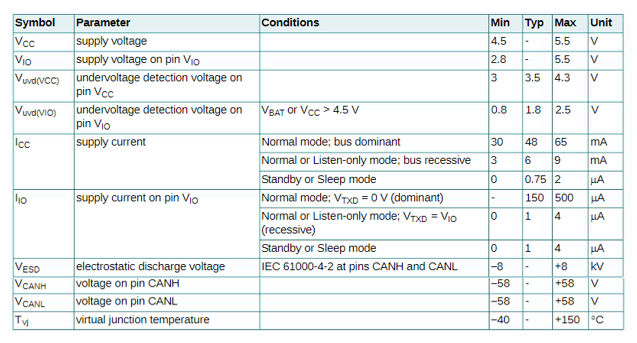
Applications of TJA1043
The TJA1043 is used in many different industries, offering clear benefits in each area.
Medical Equipment
In healthcare, it allows for smooth data exchange between medical devices, helping improve patient monitoring, care, and diagnostics.
Smart Home Systems
The transceiver acts as a link for communication between devices like lights, locks, and thermostats, allowing home automation to run smoothly and helping save energy.
Industrial Automation
In industrial settings, it helps monitor machines in real-time and supports remote maintenance, leading to less downtime and lower repair costs, while also boosting productivity.
Automotive Networks
TJA1043 helps ensure steady communication between ECUs (Electronic Control Units), which is important for keeping vehicles safe and performing well in systems like braking and engine control.
Sensor Systems
It sends data between sensors efficiently, making it easier to monitor industrial processes in real time. This helps improve how systems work and keeps them safer.
Energy Management Systems
By linking control units that manage energy use, it helps track and regulate energy more effectively. This leads to better energy efficiency, lower costs, and less impact on the environment.
PLC Communication
TJA1043 helps synchronize PLCs (Programmable Logic Controllers), making industrial processes run more smoothly with fewer mistakes, and allowing automation technology to be used more effectively.
Frequently Asked Questions [FAQ]
1. What is the TJA1043?
The TJA1043 is a fast CAN transceiver made for communicating between ECUs (Electronic Control Units) in vehicles. It helps ensure that data moves smoothly and efficiently within the vehicle's system, contributing to modern car designs.
2. What does a CAN Transceiver do?
A CAN transceiver helps send and receive data by converting electrical signals. It allows smooth communication between different parts of a vehicle, letting them exchange data in real time, which is especially important for systems related to safety and performance.
3. How do the CAN Controller and Transceiver differ?
The CAN controller handles tasks like organizing data packets and checking for errors, while the transceiver works at the physical level, converting signals for the CAN bus. This division lets each part focus on specific functions, which ensures reliable data handling and signal processing.
4. Why use a transceiver like TJA1043?
The TJA1043 transceiver converts digital signals from the microcontroller into signals that can be used on the CAN bus, and vice versa. This ensures that data stays accurate and communication across the network is dependable, which is especially important in tightly controlled environments.
5. What protections does the TJA1043 offer?
The TJA1043 includes features like protection against too much or too little voltage, and thermal shutdown, which prevent damage to components and ensure the system works reliably even in tough conditions. These protections help create stronger, more reliable automotive systems.
About us
ALLELCO LIMITED
Read more
Quick inquiry
Please send an inquiry, we will respond immediately.
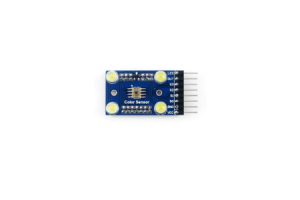
TCS3200 RGB Color Sensor: Comparisons, Structure, and Applications
on September 26th
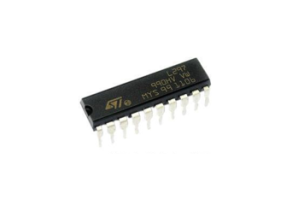
Comprehensive Guide to the L297 Stepper Motor Controller
on September 26th
Popular Posts
-

What is GND in the circuit?
on January 1th 3271
-

RJ-45 Connector Guide: RJ-45 Connector Color Codes, Wiring Schemes, R-J45 Applications, RJ-45 Datasheets
on January 1th 2815
-

Understanding Power Supply Voltages in Electronics VCC, VDD, VEE, VSS, and GND
on November 20th 2635
-

Fiber Connector Types: SC Vs LC And LC Vs MTP
on January 1th 2265
-

Comparison Between DB9 and RS232
on January 1th 1881
-

What Is An LR44 Battery?
Electricity, that ubiquitous force, quietly permeates every aspect of our daily lives, from trivial gadgets to life-threatening medical equipment, it plays a silent role. However, truly grasping this energy, especially how to store and efficiently output it, is no easy task. It is against this background that this article will focus on a type of coin cell battery that may seem insignificant on the...on January 1th 1846
-

Understanding the Fundamentals:Inductance Resistance, andCapacitance
In the intricate dance of electrical engineering, a trio of fundamental elements takes center stage: inductance, resistance, and capacitance. Each bears unique traits that dictate the dynamic rhythms of electronic circuits. Here, we embark on a journey to decipher the complexities of these components, to uncover their distinct roles and practical uses within the vast electrical orchestra. Inductan...on January 1th 1806
-

What Is RF and Why Do We Use It?
Radio Frequency (RF) technology is a key part of modern wireless communication, enabling data transmission over long distances without physical connections. This article delves into the basics of RF, explaining how electromagnetic radiation (EMR) makes RF communication possible. We will explore the principles of EMR, the creation and control of RF signals, and their wide-ranging uses. The article ...on January 1th 1800
-

CR2430 Battery Comprehensive Guide: Specifications, Applications and Comparison to CR2032 Batteries
What is CR2430 battery ?Benefits of CR2430 BatteriesNormCR2430 Battery ApplicationsCR2430 EquivalentCR2430 VS CR2032Battery CR2430 SizeWhat to look for when buying the CR2430 and equivalentsData Sheet PDFFrequently Asked Questions Batteries are the heart of small electronic devices. Among the many types available, coin cells play a crucial role, commonly found in calculators, remote controls, and ...on January 1th 1797
-

Comprehensive guide to hFE in transistors
Transistors are crucial components in modern electronic devices, enabling signal amplification and control. This article delves into the knowledge surrounding hFE, including how to select a transistor's hFE value, how to find hFE, and the gain of different types of transistors. Through our exploration of hFE, we gain a deeper understanding of how transistors work and their role in electronic circu...on November 20th 1782


